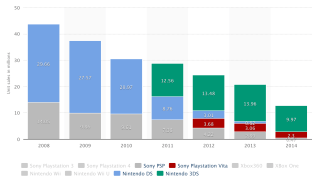
The cable bundle is misunderstood. While analysts and pundits focus on when the cable bundle will finally succumb to Netflix (NASDAQ:NFLX), HBO, and Hulu, the reality is the future of television will be built on the video bundle's back. Due to attractive economics, video bundles are one of the best values in the media space and will remain the dominant way we receive premium video content. We are quickly approaching the point where Apple (NASDAQ:AAPL) can capitalize on market dislocation to destroy the modern-day big cable bundle with a leaner bundle that is built to thrive in a mobile world.
Video Bundle Economics
The cable bundle has been one of the best consumer deals in the modern era. By subsidizing content's true cost, the bundle makes it possible for consumers to receive a vast amount of video content for an artificially low monthly price. The bundle works marvelously well as long as everyone pays into the system, and this has been the case for the last 20 years. Nielsen estimated there were 116 million homes with televisions in the U.S., of which approximately 100 million had some form of pay TV for the 2014-2015 TV season. ESPN is one of the most widely distributed cable networks, reaching 95 million homes. ESPN has a farther reach than Facebook (NASDAQ:FB), a testament to how much power the cable bundle holds.
While the video bundle will remain relevant for many years, the content associated with the bundle will change. New companies have relied on the old bundle parameter, namely, selling a wide range of content to as many people as possible to carve out a piece of the subscription video streaming market. Companies like Netflix, HBO, and Hulu sell video bundles. Instead of charging viewers by individual shows and series, these companies charge for access to a wide selection of content appealing to a range of consumers.
Most cable networks are in existence today because of the large cable bundle. Without the bundle, these networks would not be able to fund their current slate of programming. The mistake many people make when analyzing the bundle is to ignore the value of access. Having a window to nearly 100 million households is in many ways more lucrative than the pennies or nickels that the average channel receives from each household each month. This is a cable distributor's key selling point, and we often see fighting between content owners and distributors over access.
The Trickiness in Going Direct to Consumer
When contemplating the future of television, many have thought the strongest cable networks can one day bypass the large cable bundle and sell their programming direct to consumer. For simplicity's sake, I position ESPN and AMC as the poster children of this theory. In the current system, ESPN receives approximately $6 per month from every household subscribing to cable. AMC receives quite a bit less, approximately $0.50, although it is still well above the average $0.15 received. If ESPN and AMC were to leave the bundle and embrace the direct to consumer model, they would need not only to make up lost subscriber fee revenue, but also contemplate losing access to 100 million households. AMC relies on that access to sell new series, like "Fear the Walking Dead," to viewers. "Fear the Walking Dead" just became the highest-rated series premiere in cable TV history thanks to AMC's reach. ESPN also benefits from grouping sports programming into one channel, appealing to a much wider fan base, including those who may only watch a game or two each month.
There is no question that the best networks will have loyal fans ready to pay top dollar for a direct to consumer option. However, that won't be enough since these networks are simply not built to support such a model. It will be very difficult for ESPN and AMC to stop subscribers from signing up for their content only to watch their favorite series or sports season and then cancel their membership afterwards. With the cable bundle, such month-to-month volatility does not exist.
I am very skeptical that a cable network will be able to go 100 percent direct to consumer. The economics are just not in their favor. Instead, a hybrid approach may work although in many instances, the best case scenario would be to just get to a point that matches the current large cable bundle. There is much incentive on the part of cable networks to make the bundle work.
Time for Action
The mobile revolution has weakened the large cable bundle's fundamental underpinning. Mobile hasn't changed just the way we communicate, but also the way we create and consume content. Having new types of video content in our pocket has led us to no longer sit in a particular room at a particular time to watch a particular show. As smartphones continue to grow in screen size, all other pieces of smart glass in our lives, including our television sets, will lose value and importance.
The old definition of TV doesn't do justice to the much wider array of available content that we now have at our fingertips. As smartphone adoption grew, the idea that anyone could be a content creator became reality. While YouTube may still lead in terms of mindshare when thinking of user-generated content, we also have plenty of interesting content found on video-sharing networks like Vine, Snapchat, and Periscope, not to mention premium content from the likes of Netflix, HBO Now, Hulu, and Amazon.
One example of an entirely new form of content that people are increasingly turning to is vlogs, which is short for video blogs. The following Google Trends chart highlights vlogging's expanding popularity. The vlogging industry, notorious with young people chronicling their daily activities, is still in its infancy. Vlogging combines elements of reality TV with scripted television as many vloggers record real-life situations although the heavy use of editing and some pre-planning suggest there are also elements of a regular sitcom.



